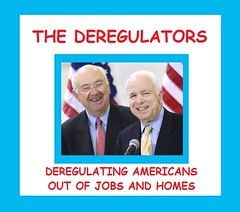San Jose, California (PRWEB) July 24, 2014
Follow us on LinkedIn Level measurement represents a critical process in industries where fluids and fluidized-solids are handled. Chemical, petroleum refineries, petrochemical, and food and beverage industries among others, routinely perform level measurement in order to ensure reliability of manufacturing processes. Level sensors in this regard, help detect level of different fluids (including those in production or those produced as end-product) to prevent overflows. Besides process industries, level sensors are also used extensively in water and wastewater management where they find applications in measuring drinking water, sewage, raw water, brackish water, industrial effluent, and sea water desalination.
Demand for level sensors is primarily reliant on the health of industrial processing and manufacturing industry. Rising focus on water conservation and recycling and subsequent rise in water & wastewater management projects, and growing power sector investments are driving demand for level sensors. While growing demand for petroleum products fuels demand for level sensors in petroleum refineries, steady consumption of a range of chemicals and their increased production drives use of level sensors in the chemical industry. Increasing application of level sensors in the oil and gas industry for identification of leak detection and fuel loss, measuring cooling water flow level, hydraulic fluid flow level and process gas flow level, and measuring discharged water level for environmental compliance, is also benefiting market growth. Stringent regulations such as Wastewater Systems Effluent Regulations and Clean Water Act in Europe and the United States are fueling growth in the market. Technology developments and product enhancements that help expand application possibilities will spur opportunities for growth in the coming years. Sensor manufacturers are increasingly focusing on the development of new, miniature, electronic level sensors, featuring low power consumption and ease-of-use as primary benefits.
As stated by the new market research report on Level Sensors, Europe and the United States represent the largest regional markets worldwide. Asia-Pacific ranks as the fastest growing market with a CAGR of 8.3% over the analysis period. Steady economic development, robust industrial growth, strong manufacturing, construction, mining, and energy generation activities, automation of industrial processes, and increased use of production line equipment in countries such as Korea, Singapore, India, and China, represent key growth drivers in the region. Ultrasonic Level Sensors represent the largest product market, with growth supported by increased preference for non-contact level sensors. Radar/Microwave Level sensors represent the fastest growing product market fueled by product improvements in accuracy, ease of installation, low maintenance, and suitability for use in harsh environment.
Key players covered in the report include ABB Ltd., AMETEK Inc., Ametek Drexelbrook, ANDERSON-NEGELE, Emerson Electric Co., Endress+Hauser Consult AG, General Electric Company, Gems Sensors & Controls, GF Piping Systems, Hans TURCK GmbH Co. KG, Hella KGaA Hueck & Co., Honeywell International, Inc., Kobold Messring GmbH, Kobold Instruments Inc., Krohne Messtechnik GmbH & Co. KG, Magnetrol International Inc., Measurement Specialties Inc., Pepperl + Fuchs GmbH, Siemens AG, and SSI Technologies Inc. among others.
The research report titled, Level Sensors: A Global Strategic Business Report, announced by Global Industry Analysts Inc., provides a comprehensive review of market trends, growth drivers, product innovations and launches, and strategic industry activities of major companies worldwide. The report provides market estimates and projections in US dollars for all major geographic markets, including the US, Canada, Japan, Europe (France, Germany, Italy, UK, Spain, Russia, and Rest of Europe), Asia-Pacific (China, India, South Korea, and Rest of Asia-Pacific), Latin America (Brazil and Rest of Latin America) and Rest of World. Product segments analyzed in the report include Magnetostrictive, Tuning Fork, Hydrostatic, Capacitance, Conductivity, Ultrasonic, Radar-Microwave and Others (Includes Optical Interface Point Level Sensors, Laser Level Transmitters, Nuclear Level Sensors, Tape Float, High Flow Rate Sensors, Float-Type Sensors, Resistance Tapes, Rotating Paddle Level Sensors, Pneumatic Level Sensors, Resistive Chain Level Sensors, Submersible Waste Water Level Sensors, Semi-Flexible Sensors, Tank Level Sensors, Oil Sensors, Magnetic & Mechanical Float Level Sensors, Capacitive Level Sensors, and Flow-Thru Style Sensors among Others.).
For more details about this comprehensive market research report, please visit
http://www.strategyr.com/Level_Sensors_Market_Report.asp
About Global Industry Analysts, Inc.:
Global Industry Analysts, Inc. (GIA) is a leading publisher of off-the-shelf market research. Founded in 1987, the company currently employs over 800 people worldwide. Annually, GIA publishes 1500+ full-scale research reports and analyzes 40,000+ market and technology trends, while monitoring more than 126,000 companies worldwide. Serving over 9500 clients in 27 countries, GIA is recognized today, as one of the world’s largest and reputed market research firms.
Global Industry Analysts, Inc.
Telephone: 408-528-9966
Fax: 408-528-9977
Email: press(at)StrategyR(dot)com
Web Site: http://www.StrategyR.com/








